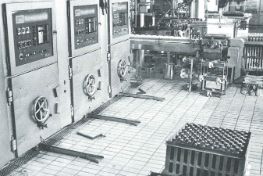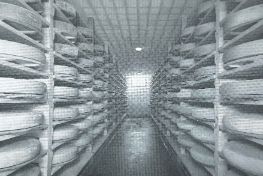Postwar years
On the basis of a revised 1947 business article, beginning in 1952 a new agricultural law regulates Swiss agriculture. The provisions governing the dairy sector and their implementation are highly contested, with the dairy industry assuming a key role. The entire milk market organisation is geared towards securing a milk price for producers that covers their costs. Given this key role, the milk price is set by the Federal Council. In return, dairy farmers are required to supply their milk to an official milk collection point or cheese dairy. Butyra and the cheese union oversee the sale of the resulting dairy products. The former organisation additionally controls the monopoly and thus regulates the butter price. Even back then, a price-support fund is needed to offset earnings on the foreign cheese markets, which are too low compared with the Swiss milk price.



